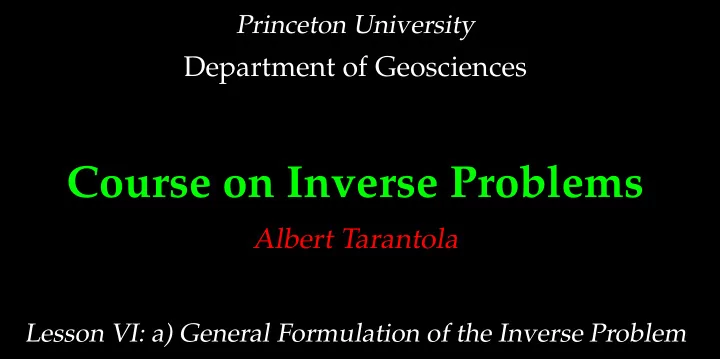

Princeton University Department of Geosciences Course on Inverse Problems Albert Tarantola Lesson VI: a) General Formulation of the Inverse Problem
Inverse Problems In a typical inverse problem, one has: model parameters M = { m 1 , m 2 , . . . , m p } , observable parameters O = { o 1 , o 2 , . . . , o q } , a relation o i = o i ( m 1 , m 2 , . . . , m p ) predicting the outcome of the possible observations. For short, M �→ O = ϕ ( M ) .
The three basic elements of a typical inverse problem are: • some a priori information on the model parameters, rep- resented by a volumetric probability f prior ( M ) defined over M , • some experimental information obtained on the observ- able parameters, represented by a volumetric probability g obs ( O ) defined over O , • the ‘forward modeling’ relation M �→ O = ϕ ( M ) that we have just seen. This leads to the posterior information represented by f post ( M ) = 1 ν f prior ( M ) g obs ( ϕ ( M ) ) , where ν is a normalization constant.
One also has a posterior information g post ( O ) on the observ- able parameters g post = ϕ ( f post ) . The explicit formula for g post ( O ) is complicated, but we ob- tain samples of g post ( O ) by mapping samples of f post ( M ) via ϕ .
Stanford University School of Earth Sciences Course on Inverse Problems Albert Tarantola Lesson VI: b) Explicit Plotting of the Posterior Volumetric Probability
Example I: Explicitly plotting the poste- rior probability density ⇒ mathematica notebook
Example II: Explicitly plotting the poste- rior probability density ⇒ mathematica notebook
Recommend
More recommend